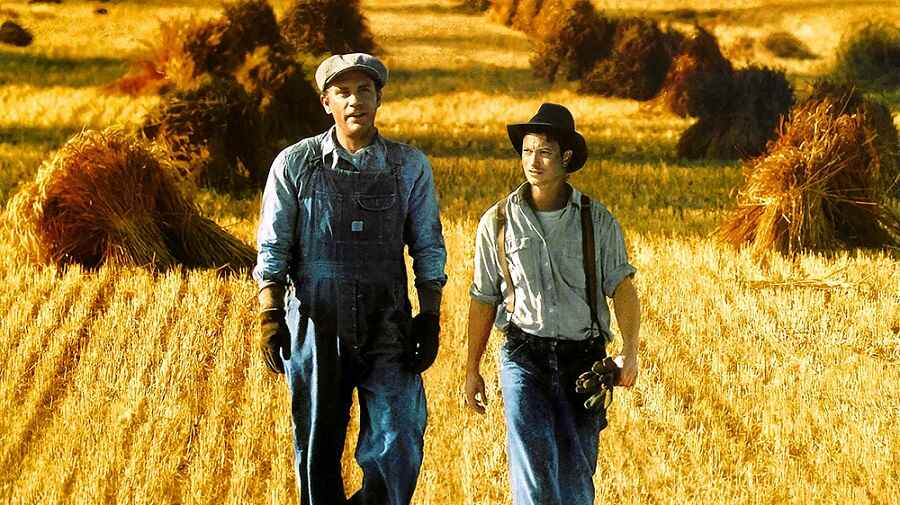Guides • Perfecting your Craft
Last updated on Feb 07, 2023
What is Literary Fiction? The Ultimate Guide in 2025
About the author
Reedsy's editorial team is a diverse group of industry experts devoted to helping authors write and publish beautiful books.
More about the Reedsy Editorial Team →Dario Villirilli
Editor-in-Chief of the Reedsy blog, Dario is a graduate of Mälardalen University. As a freelance writer, he has written for many esteemed outlets aimed at writers. A traveler at heart, he can be found roaming the world and working from his laptop.
View profile →Literary fiction is a category of novels that emphasize style, character, and theme over plot. Lit fic is often defined in contrast to genre fiction and commercial fiction, which involve certain tropes and expectations for the storyline; literary fiction has no such plot-based hallmarks.
Though it's a tough category to define, you can certainly spot literary fiction once you know what you're looking for. Intrigued? In this short guide, we’ll unpack this elusive category and give you tips for writing with literary readers in mind.
Literary fiction is not a standalone genre
You will rarely see novels marketed as ‘literary fiction’, or even shelved that way in a bookstore. This is because literary fiction still shares some features with genre and commercial fiction, though they’re presented more subtly in lit fic. But even when it’s shelved alongside commercial fiction, literary fiction has a few telltale signs, as you’ll soon see.
It’s considered a prestige category
Literary fiction novels are often seen as prestige items in a publisher’s list: cutting-edge works of ‘serious fiction’ by artists of the written word. As a result, literary fiction — even from debut authors — will often get an initial hardback release. If you see a new hardcover on prominent display at the bookstore, it’s almost guaranteed to be literary fiction.
This strategy not only gives it a chance to be seen by plenty of devoted readers, it also increases the book’s chances of being reviewed. According to the editor of The Bookseller in 2018, some literary editors will only review novels launched in hardback.
Books in this category are also privy to publishing’s biggest prizes, such as the Booker Prize and the Pulitzer Prize for Fiction. So if you see a sticker on the cover boasting that it’s been nominated for a prestigious award, you’re likely looking at a work of literary fiction.
Style and theme take priority
Another key quality of literary fiction is its attention to style, which in turn underscores major themes. Of course, when thinking of literary fiction, people tend to imagine ‘highbrow’ or difficult prose. This has led to generations of aspiring literary authors packing their prose with run-on sentences, florid metaphors, and other rhetorical bells and whistles.
While this stereotype is certainly true of some novelists (James Joyce, for example, was no stranger to run-on sentences), many literary authors favor concise prose over fancy linguistic flourishes. Take it from George Orwell, who lived by the maxim “never use a complicated word when a simple one will do” — or Hemingway, whose famously lean prose has taught generations of writers that less is more.
Basically, though you may associate literary fiction with insufferable purple prose, it doesn’t have to be that way. The defining feature of literary fiction isn’t one specific style of prose, but rather its impact on the reader, and its ability to deliver or embody the book’s theme.
If you struggle to write consistently, sign up for our How to Write a Novel course to finish a novel in just 3 months.

NEW REEDSY COURSE
How to Write a Novel
Enroll in our course and become an author in three months.
Themes are explored in depth
Indeed, literary fiction isn’t all style over substance: meaningful themes are just as important in this category. After all, what use is an interesting voice if you don’t have anything to say?
Literary fiction commonly examines ‘serious’ concepts like politics, social issues, and psychological conflict. But what makes the themes in literary fiction stand apart from those in genre fiction is the level of detail and narrative weight they’re given.
For example, George Orwell’s Animal Farm is defined by its commentary on political structures. The plot and characters are just small parts that build the novel’s overarching metaphor for the Russian Revolution, as seen through Orwell’s satirical lens.
As you can probably guess, the level of nuance required to explore serious themes calls for a great deal of time and effort on the author’s part. After all, it’s not easy to have a strong take on a weighty topic, and (crucially) understand how impacted characters would think, feel, and react — so if you intend to write literary fiction with big themes, make sure you’ve thought deeply about the real-world consequences.
They often drill into a single theme
Now, one might argue that The Hunger Games also tackles serious themes of social inequality — so how come it’s not considered literary fiction? Well, because this dystopian novel more strongly foregrounds elements of romance, coming of age, and an action-packed plot. The social themes, in many ways, are garnishes rather than the main course.

In short, genre fiction’s focus on story means that it will rarely explore themes in as much depth as literary fiction. This thematic intensity doesn't make literary fiction “better” than genre fiction, or vice-versa — it just goes to show that there are many different approaches out there to meet the varied needs of different readers.
Character studies are its bread and butter
While authors of genre fiction certainly can’t ignore character-based storytelling, their equal (or greater) focus on plot gives them less opportunity to drill deep into a character’s inner life. What’s more, most genre fiction has a protagonist who is lovable by design.
Meanwhile, in literary fiction, you’re much more likely to encounter morally gray and flawed characters, and find yourself absorbed by their history and psyche. That’s not to say every character in this category is inherently evil, incredibly flawed, or unlikable — they're just far more likely to be approached in a more complex way that exposes their faults, thus giving you the tools to dissect them.
Take The Catcher in the Rye as an example. J.D. Salinger’s hero is Holden Caulfield, a seventeen-year-old boarding school drop-out. Holden isn’t necessarily likable — in fact, he often alienates others by judging superficial characteristics extremely critically — but readers are intrigued by the book’s psychological insights into his personality. Though Holden is quick to judge others, particularly those he views as “phony”, he’s far from perfect himself; this makes trying to understand his behavior even more compelling.
Instead of making Holden likable, Salinger makes the reader empathize with him despite his personality and actions — something that’s arguably much harder to do as an author. This challenging, thought-provoking nature is a definite hallmark of literary fiction.

FREE COURSE
How to Develop Characters
In 10 days, learn to develop complex characters readers will love.
The tone is often realistic and introspective
What do Of Mice and Men, Mrs Dalloway, The Remains of the Day have in common besides their dark elements and focus on longing? While none of these books would be mistaken for nonfiction, they are all grounded in a certain realism — their writers have taken special care in exploring the emotions and reactions of their characters in very specific settings.
Considering this, it won’t surprise you that literary fiction tends to rely on the internal conflict of a character to drive the plot. In Of Mice and Men, for example, migrant farm worker George Milton is torn between his survival instincts and his loyalty to his simple (yet dangerous) friend, Lenny. While the novel arguably does have a villain — the landowner’s cruel son — the story’s true conflict takes place in George’s mind.

You might also look to Mrs Dalloway as a good example of realistic introspection. In this book, readers follow a single day in the life of Clarissa Dalloway, culminating in her finally reconciling herself with life in the present — despite her strong attachments to the past.
The Remains of the Day creates a similar air of realism by exploring the human psyche: we follow the butler of a grand English estate as he comes to terms with how his unhealthy devotion to his work, subsequent repression, and his fears of intimacy have held him back for years.
It’s about the journey
But while the resolutions of all these stories may be melancholy and uncertain, sad endings alone don’t make them lit fic — it’s about the characters’ journeys to get there.
Good literary fiction feels so real because there isn’t that certainty of a happily ever after. After this, the characters will continue on their journey, and readers can only imagine where they might go. They want to wonder what will happen to the characters based on what they’ve learned through the story, rather than simply arrive at an ending that’s wrapped up in a bow.
That literary fiction writers allude to this “to be continued” reality in their novels, makes them that much more believable.
But it can also be fanciful!
Literary fiction isn’t all dark character studies about people living on the verge of despair, mumbling to each other in a studio apartment. On the contrary, literary fiction can absolutely be fantastical while simultaneously presenting people and themes in a believable way — and what better way to study human nature than by throwing your characters into highly unusual situations?
Plenty of literary fiction writers actually specialize in playing with genre tropes and devising the most inventive concepts. One recent example of fantasy-infused literary fiction is Susanna Clarke’s Piranesi, which follows Piranesi — a man who seemingly lives alone in a vast, statue-filled labyrinth that periodically floods to dangerous levels. Let’s be honest, not much besides the human insight is realistic in this novel (unless you happen to holiday in similar dangerous labyrinths). But the outlandish premise makes the perfect playground for Clarke to explore themes of personhood and isolation.
You might also point to Susan Hill’s The Woman in Black, a novel which is equal parts literary fiction and Gothic horror. Arthur Kipps is a young lawyer investigating a creepy house on a remote island — one that belonged to his deceased client.

Through Kipps’s seemingly supernatural experiences at the house, readers are asked to consider bigger questions about sanity and objectivity. While the harrowing events in this novel are hardly realistic in the way that a Sally Rooney novel might be, its rich narration, focus on human psychology, and themes of isolation align it with literary fiction.
Authors are more free to experiment
Writers of literary fiction benefit from the fact that their readers tend to enjoy more challenging works. In genre and commercial fiction, there is an expectation that the writer will always engage the reader, propelling them through the book with quickly mounting tension. In contrast, literary fiction readers are more flexible in their initial expectations — understanding that a slow start can still build to a satisfying reveal later.
A great example of slow-burn literary fiction is Margaret Atwood’s The Blind Assassin, in which elderly Iris Chase recounts her dramatic life and the events leading up to her sister's death. Though this novel has received wide critical acclaim, a lot of readers have unfortunately placed this challenging book back on the shelf early because of its slow-paced beginning. However, the novel’s unique ‘memory recall’ structure needs that time to build the twisting mysteries which ultimately make it a true page turner.
Indeed, literary fiction readers often expect some level of experimentation that subverts the formal conventions of storytelling. Sarah Waters’s The Night Watch overturns readers' expectations by telling its story in reverse, moving backwards through the 1940s, starting in 1947. Waters’s unconventional style challenges readers by asking them to forget their curiosity about the future and try to focus solely on unraveling the past.

Of course, experimental or unusual structures aren’t just used in literary fiction for the sake of challenging readers. Typically, a nuanced structure works towards immersing the reader in the character or world of the book.
For example, a long stream of consciousness narrative (think Jean Rhys’s Wide Sargasso Sea, in which the narrator’s thoughts gradually become harder to follow) might be a great way to make readers lose themselves in the narrator’s mental decline. Or utilizing an epistolary structure (as in Lionel Shriver’s We Need to Talk About Kevin, which is told through a series of letters penned by a grieving mother) can really make the stakes feel tangible as readers dig through years of correspondence.
Literary fiction is a broad and diverse genre, so it’s pretty difficult to track down an exact definition ― but hopefully, equipped with this field guide to lit fic, you’ll feel more confident identifying it when you come across it in the wild.
If all this literary talk has you feeling inspired, make sure to head over to the next part of our guide, where you can learn insightful tips for writing your own literary fiction!


